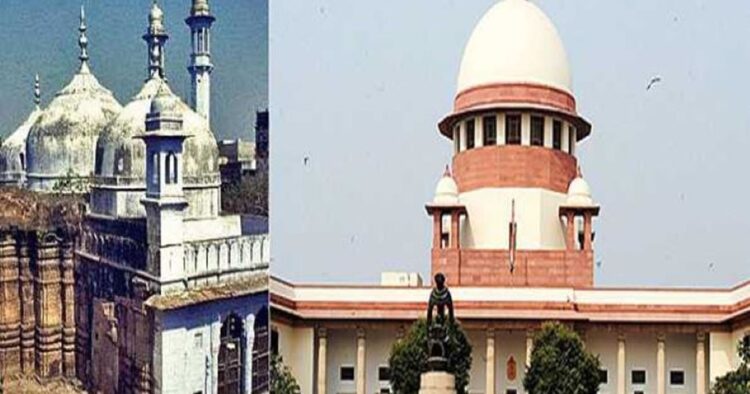In a recent development, the Supreme Court granted permission on Tuesday for the cleaning of the wuzukhana (water tank) situated at the Gyanvapi mosque in Varanasi. This decision comes after an application was filed by Hindu plaintiffs seeking the right to worship deities within the mosque premises. The three-member bench comprising Chief Justice of India DY Chandracuhd, Justice JB Pardiwala, and Justice Manoj Misra allowed the application, which was unopposed by the Mosque management committee.
The Hindu plaintiffs had presented their case for cleaning the tank, citing the presence of dead fish inside it. The mosque committee also informed the bench that they had filed a similar application with the Varanasi District Collector. The Court, in disposing of the plaintiffs’ application, directed that the cleaning process should be carried out under the supervision of the Varanasi District Collector. Senior Advocate Madhavi Divan represented the plaintiffs, while Senior Advocate Huzefa Ahmadi appeared for the mosque committee.
The background of this case dates back to May 2022 when the Supreme Court ordered the sealing of the ‘wuzukhana’ following claims of a ‘Shivlinga’ being found there. However, the Court explicitly clarified that this order would not impede the right of Muslim devotees to perform religious observances. Last year, the Supreme Court had allowed an Archaeological Survey of India (ASI) survey of the mosque premises, addressing the plaintiffs’ concerns about the mosque possibly being built over a pre-existing temple.
In a related development, the Allahabad High Court, last month, dismissed the application filed by the Masjid committee to reject the plaint, citing it as barred by the Places of Worship (Special Provisions) Act 1991. This act has been a central point of legal contention in cases involving religious places and their disputes.
This ongoing legal saga underscores the delicate balance between the rights of different religious communities and the legal complexities surrounding the historical and religious significance of contested sites.

















Comments